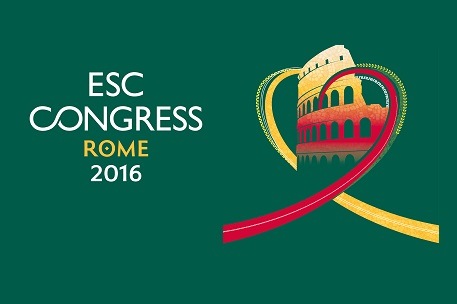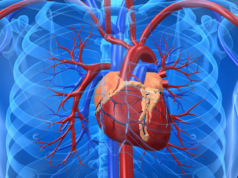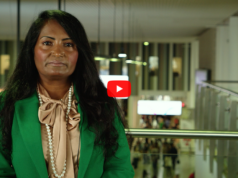 The first European Society of Cardiology (ESC) Guidelines on Atrial Fibrillation developed in collaboration with the European Association for Cardio-Thoracic Surgery (EACTS) have been published in the European Heart Journal and the European Journal of Cardio-Thoracic Surgery, and on the ESC website.
The first European Society of Cardiology (ESC) Guidelines on Atrial Fibrillation developed in collaboration with the European Association for Cardio-Thoracic Surgery (EACTS) have been published in the European Heart Journal and the European Journal of Cardio-Thoracic Surgery, and on the ESC website.
“These are the first guidelines to target every atrial fibrillation specialist,” says Stefano Benussi (Switzerland), task force co-chairperson (EACTS). “They were written by clinical cardiologists, electrophysiologists, cardiac surgeons, a neurologist and a cardiovascular nurse.”
“Integrating input from the different specialties can improve outcomes in patients with atrial fibrillation. We wanted to put patients at the centre of the new guidelines,” says Paulus Kirchhof (UK/Germany), task force chairperson (ESC).
Endorsed by the European Stroke Organisation, the guidelines recommend what to do when patients develop complications on anticoagulation. Advice is given on reinitiation of anticoagulation after a bleed, how to manage bleeds, and how to manage patients who have an ischaemic stroke on anticoagulation.
“Previous guidelines focused on which patients should receive anticoagulation and that issue is largely settled,” says Kirchhof. “The new guidelines also address the long-term challenges in anticoagulated atrial fibrillation patients that all too often lead to discontinuation of anticoagulant therapy despite prognostic benefits in the long term.”
Greater emphasis is placed on the early diagnosis of atrial fibrillation, before the first stroke. There is now sufficient evidence to support opportunistic and targeted electrocardiogram (ECG) screening, for example in people over 65 years of age and in high risk groups such as patients with pacemakers.
“Many people have atrial fibrillation and do not know it, and will only find out when they develop a first stroke,” says Kirchhof. “Early diagnosis enables us to prevent strokes with anticoagulation.”
Catheter ablation is recommended as a first line treatment in selected patients after research showed it was not less safe than antiarrhythmic drugs. Pulmonary vein isolation is recommended as the preferred first line target of ablation, with more extensive ablations reserved for repeat procedures in patients with recurrent atrial fibrillation. Recurrence rates after catheter ablation are high in the long term, and hybrid therapy with antiarrhythmic drugs and catheter ablation and atrial fibrillation surgery are reasonable treatment option in patients who fail conventional rhythm control therapy.
The Task Force proposes creating Atrial Fibrillation Heart Teams with experience in antiarrhythmic drugs, catheter ablation and surgery to take difficult decisions on rhythm control and hybrid therapy. Similarly, Atrial Fibrillation Heart Teams should support complex decisions in stroke prevention. A new chapter on integrated management advises cooperation between patients, health professionals including general practitioners and cardiologists, and the AF Heart Team for complex cases.
Free smartphone tools are being provided by the ESC for patients with atrial fibrillation and their healthcare professionals to improve communication and encourage patient involvement in management via the ESC Pocket Guidelines App available free of charge from the Apple, Google Play and Amazon Stores.
Benussi says, “There is growing awareness that we need teams to treat complex patients with atrial fibrillation. Putting patients at the centre of the treatment algorithm should improve the chances of getting rid of the arrhythmia, with the lowest possible risk. Atrial Fibrillation Heart Teams should be deployed particularly when the results of treatment are unsatisfactory.”
Kirchhof says, “We hope this integrated and stepwise approach, culminating in the AF Heart Teams for difficult decisions, will ensure that all patients with atrial fibrillation in Europe have access to specialist care and treatment when they need it.”










